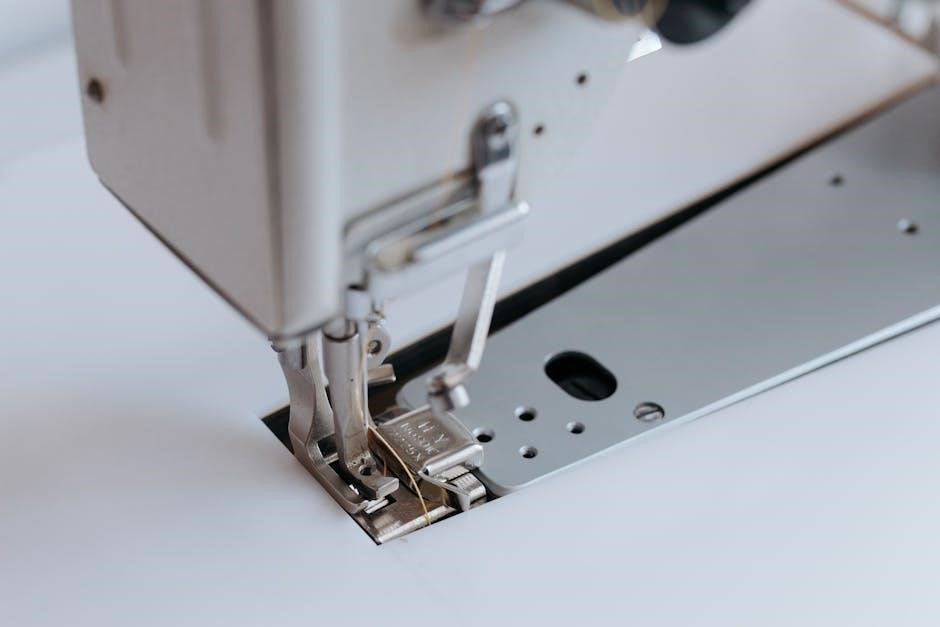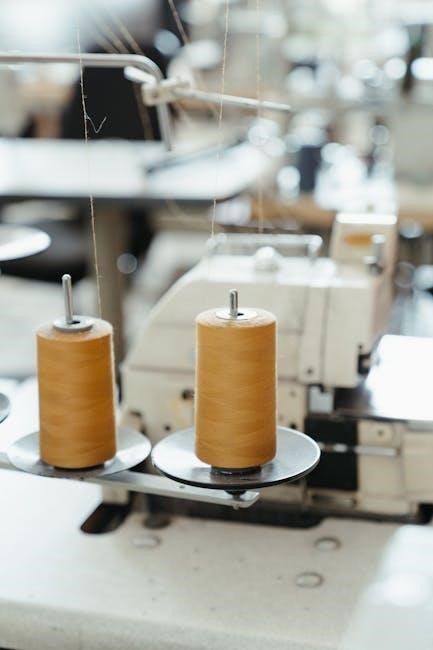Foundation design for screener tumbler machine involves creating stable platforms using reinforced concrete and steel materials carefully․
Importance of Proper Foundation Design
Proper foundation design is crucial for the successful operation of screener tumbler machines, as it ensures a stable platform for the machine to function efficiently․ A well-designed foundation can withstand dynamic loads and vibrations, preventing damage to the machine and surrounding structures․ The importance of proper foundation design cannot be overstated, as it directly affects the machine’s performance, reliability, and lifespan․ By considering factors such as soil conditions, machine weight, and operational loads, a properly designed foundation can provide a solid base for the screener tumbler machine to operate effectively and safely, minimizing downtime and maintenance costs․
Types of Machine Foundations
Machine foundations include block-type, box-type, and wall-type foundations using concrete and steel materials for support and stability always needed․
Classification Based on Structural Form
Classification of machine foundations is based on their structural form, including block-type, box-type, and wall-type foundations․ The choice of foundation type depends on the machine’s weight, dynamic loads, and soil conditions․ A block-type foundation is suitable for small machines, while a box-type foundation is used for larger machines․ Wall-type foundations are used for machines that require a high level of stability․ The classification of machine foundations is crucial in ensuring the stability and durability of the machine․ Proper classification helps in selecting the right foundation type for a particular machine, ensuring safe and efficient operation․ Foundations are designed to withstand various loads․

General Criteria for Machine Foundation Design
Machine foundations must withstand loads and limit settlement using proper materials and design methods carefully always․
Withstanding Loads and Limiting Settlement
Withstanding loads and limiting settlement are critical aspects of foundation design for screener tumbler machines, requiring careful consideration of soil conditions and machine weights․ A well-designed foundation must be able to distribute the weight of the machine evenly, preventing settlement and tilting․ This involves selecting the right materials and design methods to ensure the foundation can withstand the dynamic loads and vibrations generated by the machine during operation, thereby maintaining its stability and performance over time, and preventing damage to the machine and surrounding structures, while also ensuring safe operation․

Design Methodologies and Modeling Approaches
Utilizing finite element methods and dynamic analysis techniques carefully always․
Considering Earthquake Effects and Dynamic Loads
Earthquake effects and dynamic loads significantly impact foundation design for screener tumbler machines, requiring careful consideration of seismic activity and vibration․
Using seismic design principles and dynamic analysis techniques helps ensure the foundation can withstand earthquakes and dynamic loads, providing a stable platform for the machine to operate․
This involves analyzing the machine’s weight, operational loads, and soil conditions to determine the foundation’s required strength and stiffness, and selecting suitable materials and construction methods to achieve this․
By doing so, the foundation can effectively resist seismic forces and dynamic loads, maintaining the machine’s performance and preventing damage․

Documenting Foundation Design in PDF Format
Foundation designs are thoroughly documented in PDF format for easy reference and sharing purposes online always․
Providing Crucial Specifications for Construction
The documentation provides crucial specifications for constructing a foundation, including details on materials, dimensions, and installation procedures for screener tumbler machines․
This information is essential for ensuring that the foundation is built correctly and can support the machine’s weight and dynamic loads․
The specifications are typically outlined in a clear and concise manner, making it easy for construction teams to follow and implement the design․
By providing these crucial specifications, the foundation design documentation plays a critical role in ensuring the successful construction and operation of the screener tumbler machine, and the document is often provided in PDF format for easy access․

Standards and Guidelines for Foundation Design
Foundation design follows Bs Iso 10816 and Api standards carefully always․
Referencing Relevant Standards and Handbooks
Referencing relevant standards and handbooks is crucial for foundation design, with documents like Bs Iso 10816 and Api providing essential guidelines and specifications․ The design handbook for calculating fillet weld sizes is also a valuable resource, offering detailed information on foundation and machine types, as well as design criteria․ These standards and handbooks help ensure that the foundation design meets the necessary requirements for safety and performance, and that it is compliant with industry regulations and best practices, ultimately leading to a successful and efficient foundation design for screener tumbler machines, with all details considered carefully․
Machine and Foundation Interaction
Improved interaction between machines and foundations enhances overall performance and efficiency using proper design methodologies and techniques always carefully․
Ensuring Better Machine Performance
To ensure better machine performance, designers must consider the dynamic loads and vibrations inherent in screener tumbler machines, using techniques such as finite element analysis and modal analysis to optimize foundation design, thereby reducing the risk of machine failure and improving overall efficiency, and providing a stable platform for operation, which is critical for achieving optimal performance and minimizing downtime, and ultimately, increasing productivity and reducing maintenance costs, by providing a solid foundation for the machine to operate on, with proper documentation often provided in PDF format․
Proper foundation design is crucial for screener tumbler machine operation and efficiency always using reliable materials and methods carefully every time․
Final Considerations for Foundation Design
Final considerations for foundation design involve evaluating the entire system, including the machine and surrounding environment, to ensure optimal performance and safety․ This includes assessing potential risks and taking steps to mitigate them, such as implementing regular maintenance schedules and emergency response plans․ By taking a comprehensive approach to foundation design, engineers can create stable and efficient platforms for screener tumbler machines, ultimately leading to increased productivity and reduced downtime․ Effective communication and collaboration between designers, manufacturers, and operators are also essential for successful foundation design and implementation, using reliable methods and materials․
